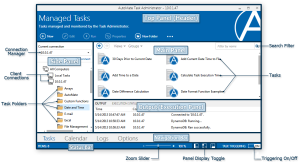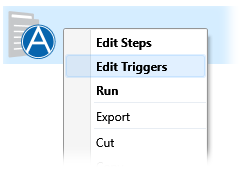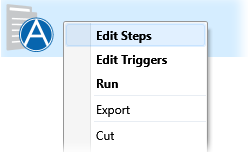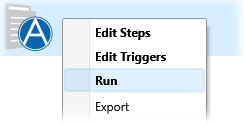Task Administrator Quick Reference Guide |
Task Administrator is the primary interface used to manage most aspects of Automate. It can be accessed from the Windows Start menu by navigating to Programs > Automate 11 folder and selecting Automate 11 Task Administrator, or by right-clicking the Automate "A" icon in the Windows system tray.
What the Task Administrator Accomplishes
The Task Administrator is used to manage and implement almost all aspects of Automate with the exception of task creation and examination. Using the Task Administrator, you can perform the following:
- Creating and naming new managed tasks
- Deploying Tasks
- Viewing or setting task properties
- Viewing the Automate Event Log
- Viewing the Calendar
What the Task Administrator Does Not Accomplish
Although nearly all aspects of Automate's operation are controlled from the Task Administrator, there is one important element that is not. That is, the actions that the task should perform once it executes (either manually or by being triggered). For this, there is a specialized task design and testing tool called the Task Builder. The Task Builder is displayed when the Edit Steps button is selected from the Task Properties of the Task Administrator.
Remote Administration
The Task Administrator console is capable of Remote Administration. That is, the capability to connect to other machines running Automate across a TCP/IP network (such as a LAN or the Internet). When connected to a remote machine, the tasks and settings displayed are those of the connected machine, not the local system. To use remote administration, select File> Connect and enter the machine name or IP address of the remote Automate installation. For more information, see About Remote Administration.
Similarly, Automate Premium Edition is capable of Runtime Support. This allows for tasks to be developed within the Premium Edition, and then deployed to Runtime Licenses (sold separately) for remote execution. This offers an extremely cost effective means of automating multiple machines with the power of Automate.
Task Administrator Quick Reference Guide
 Creating a Managed Task
Creating a Managed Task
 Adding, Editing, or Deleting Triggers
Adding, Editing, or Deleting Triggers
 Editing a Managed Task
Editing a Managed Task
 Editing Managed Task Properties
Editing Managed Task Properties
 Running Tasks Manually
Running Tasks Manually






